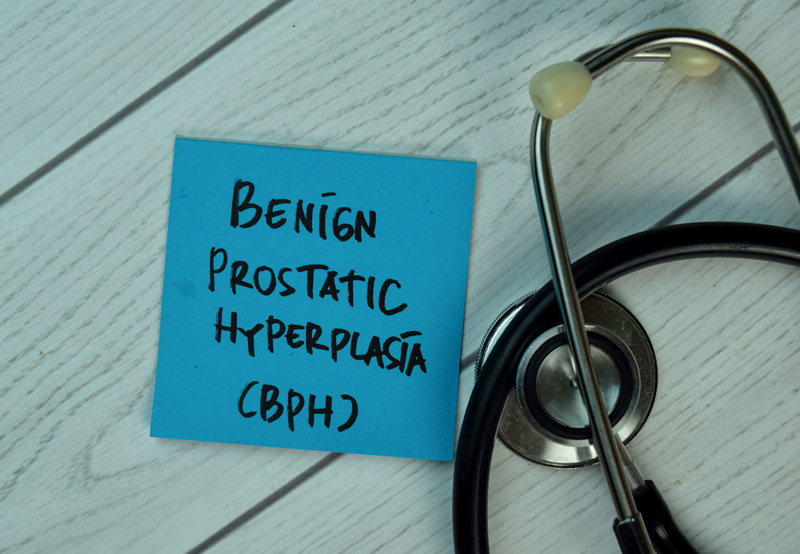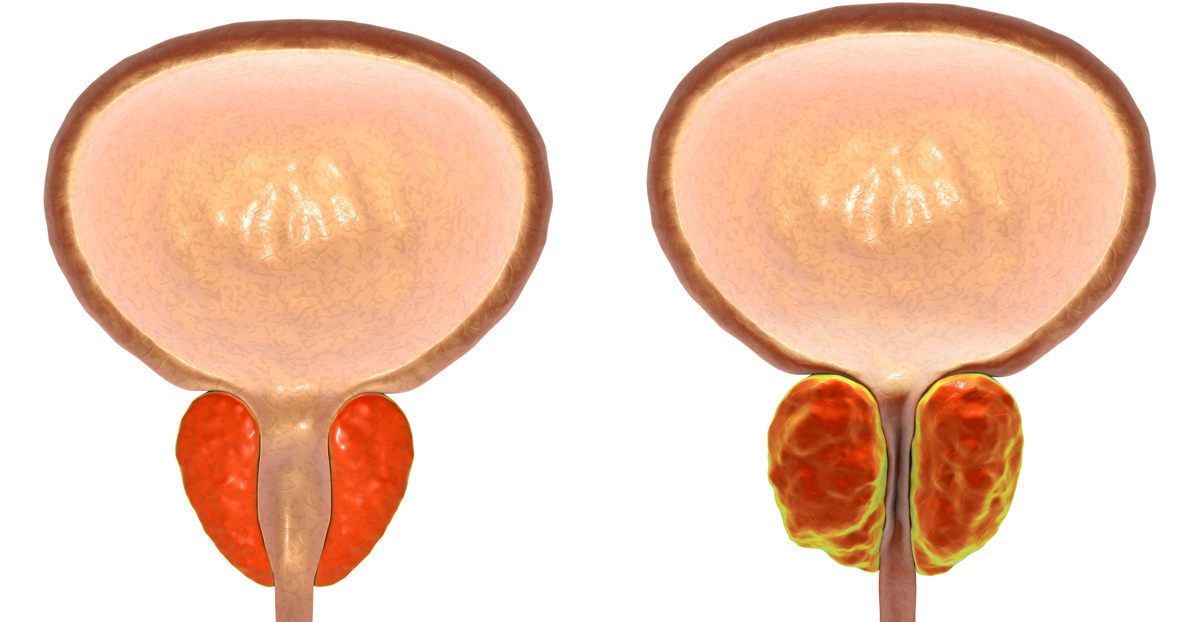

An enlarged prostate gland is a relatively common condition among men who are age 50-60 and older.
An enlarged prostate can result in different uncomfortable urinary symptoms (such as increased nighttime voiding), as well as issues with the kidneys and bladder. The prostate gland is found between the penis and bladder. It is responsible for producing a fluid that protects and nourishes sperm.
Those with a family history of enlarged prostate and men who are obese tend to be at a higher risk. Heart disease and diabetes are also risk factors. Men taking beta blocker medications might also be at a higher risk for enlarged prostate.
Causes
The prostate tends to grow throughout life for most men. In many cases, the prostate can enlarge enough to block the flow or urine or cause other symptoms. Exactly what causes the enlargement is not completely clear. It is believed that sex hormone balance changes associated with aging plays a role.

Symptoms
The symptoms a patient can experience vary greatly. However, for most patients, even if the symptoms begin as minor, they tend to progress with time. They may include:
- Urination urgency or frequency
- Difficulty starting urination
- At the end of urination, dribbling may occur
- Increased nighttime urination
- Starting and stopping urine stream
- Weak urine stream
- Not being able to fully empty the bladder
- Inability to urinate
- Urinary tract infection
- Blood in the urine
Treatment Options
BPH treatment can involve monitoring, medication, or surgery for an enlarged prostate.
Patients showing symptoms of an enlarged prostate should be fully evaluated before treatment options are discussed. Common diagnostic tests include a digital rectal examination, blood testing for kidney health, and urine testing to rule out other potential issues. A specific blood test referred to as the prostate-specific antigen is also common. When levels of this antigen are increased, it can indicate an enlarged prostate. Certain imaging tests and pressure flow studies are also possible.
Treatment will depend on the patient’s age, level of discomfort and symptom severity, prostate size and the patient’s overall health. When symptoms are tolerable, some men might utilize watchful waiting instead of treatment.
Monitoring. The type of treatment recommended will depend on factors such as overall health, the size of the enlarged prostate, and the severity of symptoms. If disruption to urine flow is minimal or not a serious issue, periodic monitoring may be all that’s necessary. In some cases, symptoms naturally ease with little or no intervention.
Medication. Medications are often considered first for men who opt for treatment. Alpha blockers may ease urination by working to relax the prostate muscle fibers and the bladder neck muscles. 5-alpha reductase inhibitors may prevent certain hormonal changes to shrink the prostate. Depending on the severity of symptoms and the size of the prostate, a urologist may recommend a combination of more than one medication. There’s also research suggesting that an erectile dysfunction medication (tadalafil) may be effective for BPH treatment.
Surgery. If medication isn’t effectively managing symptoms, surgery may become an option. Surgery for BPH may also be recommended if a patient’s enlarged prostate is contributing to issues with bladder stones, kidney problems, or an obstruction in the urinary tract. There are several minimally invasive procedures that may be considered.
- Transurethral resection of the prostate: With this procedure, most of the prostate gland is removed through a special lighted tool inserted through the urethra. The outermost part of the gland remains in place. A catheter is sometimes temporarily needed post-surgery to help with bladder drainage.
- Transurethral incision of the prostate: Also performed with a scope, this procedure involves one or two cuts in the prostate gland to provide a better passageway for urine. This procedure may be done on patients not able to have other surgical treatments due to health risks.
- Transurethral needle ablation: This helps to improve urine flow by destroying excess prostate tissue.
- Robotic simple prostatectomy: This procedure is performed to resect all prostatic tissue except for the outer shell.
Other treatments. Prostate tissue is sometimes removed with laser therapy with a high-energy laser that’s applied to certain parts of the gland. If a prostate lift is done, the sides of the gland are compressed to improve urine flow. With embolization, blood flow to the prostate is blocked in certain areas to shrink the gland.
*For men with a significantly enlarged prostate, a robot-assisted simple prostatectomy may be done to remove all or part of the prostate.
Even when the only recommended treatment is periodic monitoring, it’s important for patients with BPH to pay attention to changes in symptoms that might occur as the prostate further enlarges. BPH isn’t considered a preventable condition. However, taking steps to maintain good prostate health, such as eating selenium-rich foods like seafood and wheat germ, getting regular urinary system and prostate exams, and maintaining a healthy weight, may minimize the risk of experiencing problems related to this gland.
